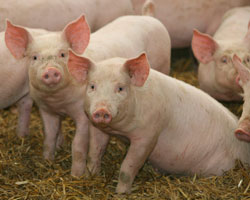Subscribe to Our Newsletters
Feedstuffs is the news source for animal agriculture
Threonine:lysine ratio required to optimize average daily gain is 0.71 for pigs fed high-fiber diets and 0.66 for pigs fed low fiber-diets.
December 22, 2016

You May Also Like